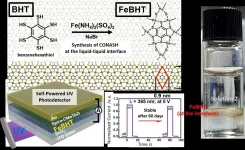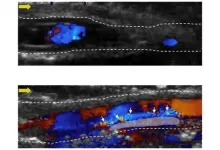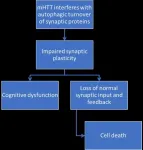INFORMATION:
Early intervention in schools needed to address Malta's obesity crisis
2021-07-15
(Press-News.org) A new study by the University of Malta and Staffordshire University highlights an urgent need for change in the curriculum and demonstrates how introducing longer, more frequent and more physically intense PE lessons can significantly improve children's weight and overall health.
Malta currently has one of the highest rates of obesity worldwide with 40% of primary and 42.6% of secondary school children being overweight or obese.
The World Health Organization (WHO) recommends that children engage in at least 60 minutes of age-appropriate moderate-to-vigorous physical activity (MVPA) daily, however Maltese children are among the lowest to achieve this.
Dr Alfred Gatt, Associate Professor at the University of Malta said: "Widespread obesity in Malta has physical, psychological and social implications, as well as crippling health costs for Malta of around 70 million euros each year for the treatment of complications of obesity. Childhood intervention is crucial, and we believe the school environment to be the best outreach system."
Dr Amanda Fenech, a paediatric doctor at Mater Dei Hospital, who led the study said, "Currently Malta has both an insufficient number of PE lessons - with only 31 hours in secondary schools annually compared to 108 hours in France - and low activity rates during those lessons. Our study investigates whether adopting an alternative, evidence-based PE education program alongside biomechanical testing could be used as a cost-effective way to address this."
120 children aged 9 to 10, attending state primary schools, participated in the study over one school year. While a control group was taught the national PE curriculum, an intervention group took part in the Sports, Play and Active Recreation for Kids (SPARK) PE education program, which is specifically designed to achieve the recommended 50% of MPVA per PE lesson.
The impact of increased MPVA on BMI, waist circumference, and resting heart rate were measured alongside biomechanical tests to assess vertical jump height and postural stability.
Vertical jumps executed on a force platform measured sports performance by evaluating the explosive strength of the lower limbs, while the postural stability tests looked at gait pattern and balance which are often affected by being overweight.
Professor Nachi Chockalingam, from Staffordshire University's Centre for Biomechanics and Rehabilitation Technologies, explained: "The concept of biomechanical fitness testing is still relatively new and mainly performed by elite athletes. However, it is important to understand that biomechanical tests can also be used as educational tools for youths. Additionally, biomechanical assessments can objectively pinpoint those students who have the potential to become gifted athletes, as well as identify those students who might have structural or positional problems with their body and can therefore be picked up early in life and managed accordingly."
Over a period of eight months, the intervention group reported improvements in BMI, resting heart rate, jump height and balance parameters while overweight and obesity prevalence decreased by 15.7% compared to 3.2% in the control group.
Although the waist circumference increased in both groups, which is expected in a population of growing children, the prevalence of children with a waist circumference above the 90th centile decreased by 6.6% in the intervention group and increased by 6.8% in the control group.
Professor Chockalingam added: "These results prove that inexpensive methods can be adopted to raise the proportion of physical activity during PE lessons, leading to significant health benefits. The study also demonstrates the potential application of biomechanical tests, currently only used in professional athletes, as objective tools to assess children's fitness in schools."
Dr Cynthia Formosa, Associate Professor and Head of Podiatry at the University of Malta said: "Going forward, we hope that these findings can be used to integrate an evidence-based PE curriculum as a public health initiative against childhood obesity in Malta."
ELSE PRESS RELEASES FROM THIS DATE:
On the front lines: Correctional nurses and the COVID-19 pandemic
2021-07-15
New Rochelle, NY, July 14, 2021-Firsthand reports from nurses in correctional facilities detail the challenges they faced during the COVID-19 pandemic. These firsthand accounts are reported in a special issue on correctional nursing in the Journal of Correctional Health Care. Click here (https://www.liebertpub.com/toc/jchc/27/2) to read the issue now.
Karen Monsen, PhD, RN, School of Nursing, University of Minnesota, and colleagues present the Omaha System COVID-19 Response Guidelines, which provide evidence-based pandemic response interventions used in correctional ...
Unlocking efficient light-energy conversion with stable coordination nanosheets
2021-07-15
Converting light to electricity effectively has been one of the persistent goals of scientists in the field of optoelectronics. While improving the conversion efficiency is a challenge, several other requirements also need to be met. For instance, the material must conduct electricity well, have a short response time to changes in input (light intensity), and, most importantly, be stable under long-term exposure.
Lately, scientists have been fascinated with "coordination nanosheets" (CONASHs), that are organic-inorganic hybrid nanomaterials in which organic molecules are bonded to metal atoms in a 2D network. The interest in CONASHs stems mainly from their ability to absorb light at multiple wavelength ranges and convert ...
Life-saving snake venom
2021-07-15
Indiana Jones hates snakes. And he's certainly not alone. The fear of snakes is so common it even has its own name: ophidiophobia.
Kibret Mequanint doesn't particularly like the slithery reptiles either (he actually hates them too) but the Western University bioengineer and his international collaborators have found a novel use for snake venom: a body tissue 'super glue' that can stop life-threatening bleeding in seconds.
Over the past 20 years, Mequanint has developed a number of biomaterials-based medical devices and therapeutic technologies - some of which are either licensed to medical companies or are in the advanced stage of preclinical testing.
His latest collaborative research discovery ...
Engineers find imaging technique could become treatment for deep vein thrombosis
2021-07-15
Penn State College of Engineering researchers set out to develop technology capable of localizing and imaging blood clots in deep veins. Turns out their work may not only identify blood clots, but it may also be able to treat them.
The team, led by Scott Medina, assistant professor of biomedical engineering, published its results in Advance Healthcare Materials.
"Deep vein thrombosis is the formation of blood clots in deep veins, typically in a person's legs," said Medina. "It's a life-threatening blood clotting condition that, if left unaddressed, can cause deadly pulmonary embolisms -- when the clot travels to the lungs and blocks an artery. To manage DVT, and prevent these life-threating complications, it's critical to be able to rapidly detect, monitor and treat it."
The ...
New research at ESMT Berlin shows potential variance in academic research
2021-07-15
The research seeks to understand what drives decisions in data analyses and the process through which academics test a hypothesis by comparing the analyses of different researchers who tested the same hypotheses on the same dataset. Analysts reported radically different analyses and dispersed empirical outcomes, including, in some cases, significant effects in opposite directions from each other. Decisions about variable operationalizations explained the lack of consistency in results beyond statistical choices (i.e., which analysis or covariates to use).
"Our findings illustrate the importance of analytical choices and how different statistical methods can lead to different conclusions," says Martin Schweinsberg. ...
New guidance on how to diagnosis and manage osteoporosis in chronic kidney disease
2021-07-15
Patients with advanced chronic kidney disease (CKD) typically suffer from impaired bone quality and quantity, with a non-vertebral fracture risk which is 4-to 6-fold higher than the fracture risk of matched controls. However, despite their high risk of fragility fractures, the vast majority of patients with chronic CKD stages 4 to 5D, are not receiving osteoporosis therapy.
A newly published review by the International Osteoporosis Foundation (IOF) and European Renal Association-European Dialysis and Transplant Association (ERA-EDTA) CKD-MBD working group now provides concise recommendations, with a clear management algorithm, to support clinicians' knowledge and confidence in managing ...
Antihypertension drug may help patients with noncancerous brain tumors affecting hearing
2021-07-15
BOSTON - New research led by investigators at Massachusetts General Hospital (MGH) and Massachusetts Eye and Ear indicates that the blood pressure drug losartan may benefit patients with neurofibromatosis type 2 (NF2), a hereditary condition associated with vestibular schwannomas, or noncancerous tumors along the nerves in the brain that are involved with hearing and balance. The findings, which are published in Science Translational Medicine, are especially important because vestibular schwannomas are currently treated with surgery and radiation therapy (which carry risks of nerve damage), and no drug is approved by the U.S. Food and Drug Administration to treat these tumors or their associated hearing ...
Autophagy may be the key to finding treatments for early Huntington's disease
2021-07-15
Amsterdam, July 15, 2021 - Huntington's Disease (HD) is a progressive neurodegenerative condition characterized by motor, cognitive, and psychiatric symptoms, and motor symptoms are often preceded by cognitive changes. Recent evidence indicates that autophagy plays a central role in synaptic maintenance, and the disruption in autophagy may be at the root of these early cognitive changes. Understanding this mechanism better may help researchers develop treatments for patients with HD early in their disease progression, report scientists in a review article published in the Journal of Huntington's Disease.
In this review, experts describe how autophagy, the cellular process responsible ...
What does the sleeping brain think about?
2021-07-15
We sleep on average one third of our time. But what does the brain do during these long hours? Using an artificial intelligence approach capable of decoding brain activity during sleep, scientists at the University of Geneva (UNIGE), Switzerland, were able to glimpse what we think about when we are asleep. By combining functional magnetic resonance imaging (fMRI) and electroencephalography (EEG), the Geneva team provides unprecedented evidence that the work of sorting out the thousands of pieces of information processed during the day takes place during ...
Wolf pups born on Isle Royale, moose poised for decline
2021-07-15
The COVID-19 pandemic halted the in-person wintertime survey of wolves and moose on the island for the first time in 63 years. Consequently, there are no estimates of wolf or moose abundance for 2021, and the next estimates are scheduled in February 2022. But though the Isle Royale Winter Study didn't happen quite as planned, researchers were still able to visit the remote national park in the spring.
Now, fieldwork has resumed and Michigan Technological University researchers have already uncovered new information about these two iconic wildlife populations. In particular, wolves produced at least two litters of pups, and moose appear poised for decline.
In the Isle Royale Winter Study, Michigan ...




